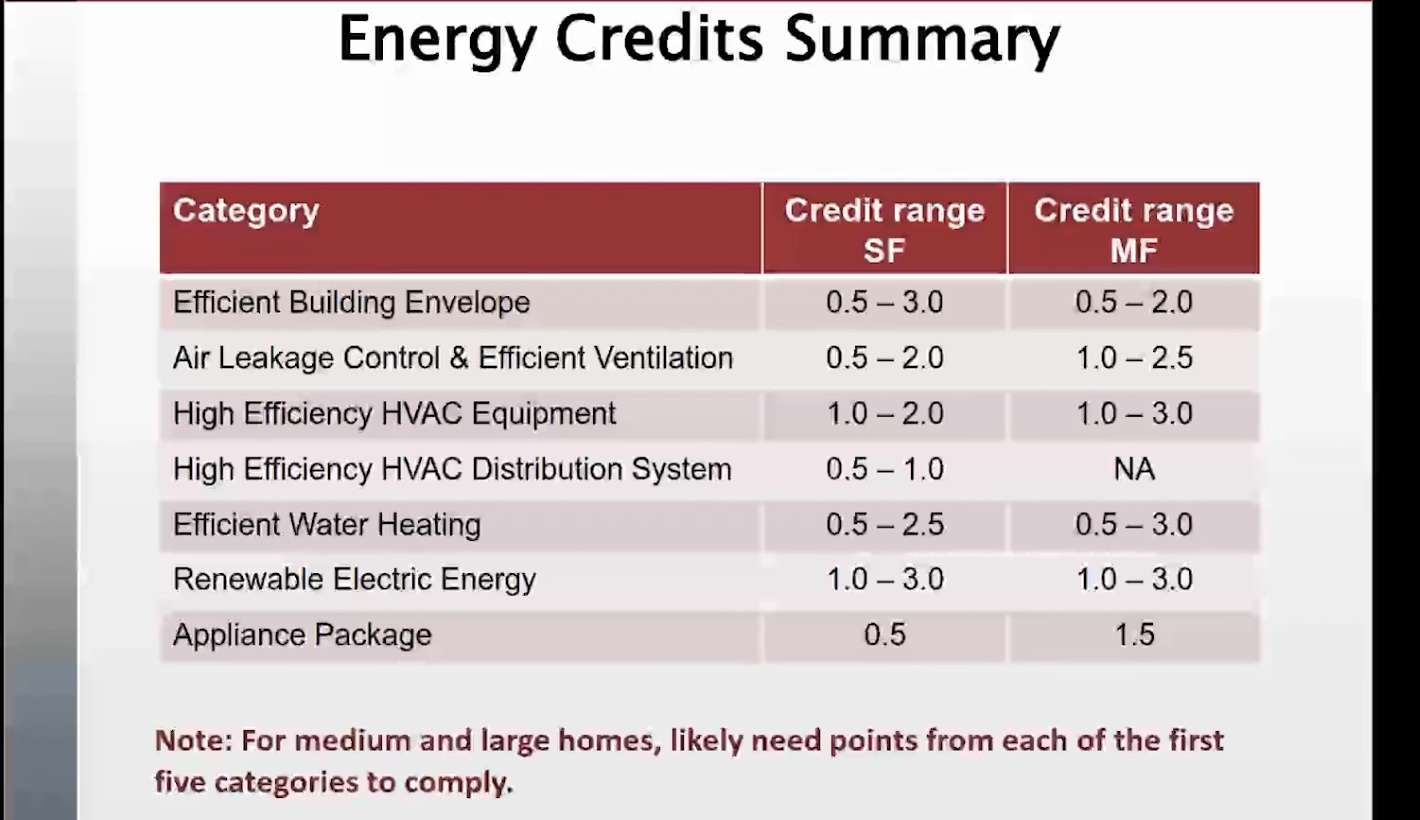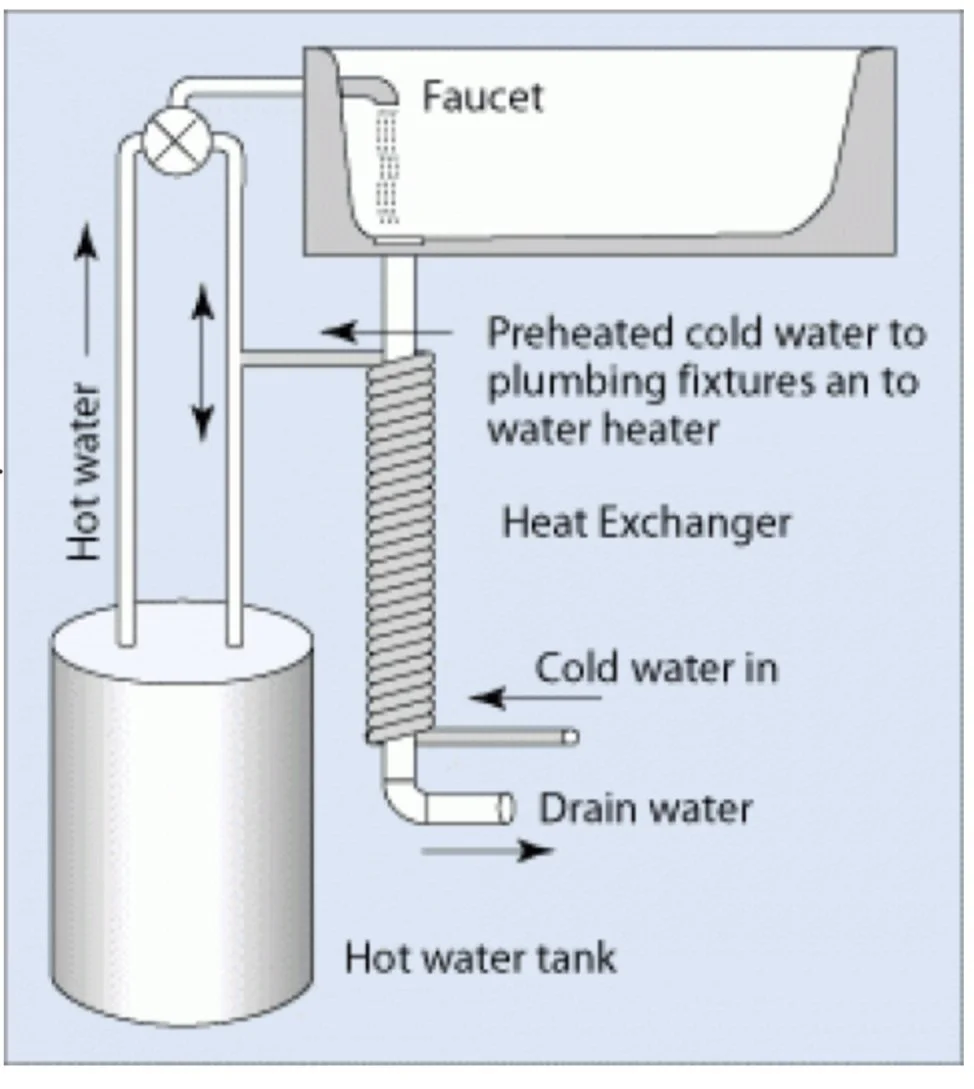Don't Get Gaslit: Ways to Meet Washington's Building Code Without Using Natural Gas
/Since Washington increased its energy efficiency credit requirements in the residential building code, I’ve run across a few blog articles that suggest ways to meet using natural gas heating or water heaters. Since a key reason for changing codes is to build homes or multi-family buildings that are better for the environment, I thought I’d take some time to look at the code and see how hard (or easy) it is to meet the code without using natural gas. WSU’s Energy Program was an excellent resource for learning about the code and all the informative graphics (except for the drain water recovery system) are from their PPT presentations.
A quick caveat: these totals are based on Washington State Building Code requirements there may be additional requirements for local building jurisdictions.
GRAphic: WSU ENergy PRogram
With disclaimers done, and attributions made, let’s see how easy it actually is to meet the Washington State Building Code requirements without using fossil fuels.
Quick Code Refresher
The Washington State residential code requires 3 energy efficiency credits for new home builds up to 1500 square feet, 6 energy credits for homes up to 5,000 square feet and seven credits for homes over 5,000 square feet. The Energy Credit Summary table demonstrates the range of credits that can be achieved in each of the categories.
Fuel Normalization Credits and Primary Heat Source
Graphic: WSU ENergy PRogram
Additionally there is a fuel normalization credit. This “credit” either increases or decreases your score depending on the choice you make for space heating in the home. The Fuel Normalization Credit was designed to reflect the energy implication on the climate for each of the available heating and cooling options.
As you can see from the chart, natural gas systems don’t add or subtract from the energy score. A heat pump system that meets federal standards boosts score by a point while a heating system based only on electric resistance takes a point off your score. Systems that include electrical and a heat pump still gain one-half point and all other heating systems also take a point off your energy credit score.
Space Heating Credits Under Washington Residential Code
Graphic: WSU ENergy Program
Since the fuel normalization credit deal with heating, it makes most sense to talk about fossil-fuel free heating options first. As the credit table shows, using an electric resistance system as the main form of heating penalizes you a credit. However, using a high-efficiency mini-split system (like Midea – HSPF 10 DHP, no ER) for space heating you earn 2.0 credits. If
there is no (or minimal) electric resistance heating used in the option, you’re also eligible for the 1.0 fuel normalization credit, giving you a total of 3.0 credits toward the energy credits needed.
Hot Water Heating Credits Under Washington Residential Code
Graphic: WSU Energy Program
Since water is the highest energy use after space heating, it makes sense that water is the second area where a large number of points are given. Looking at the points available in this option, it is easy to see how a quick grab for a point is available for gas (for up to one point), but the use of heat pumps is incentivized and don’t require a lot of procedural changes for a builder. The real sweet spot for lovers of SANCO2 heat pump water heaters is that they are eligible for 2.5 credits because it is a split system.
Adding a domestic water heat recovery (DWHR) to showers grabs an additional half point, bringing a SANCO2 and DRHW combo up to three points.
What is a drain water heat recovery system?
Graphic from: https://www.energy.gov/energysaver/drain-water-heat-recovery Heat exchanger sending hot water to the hot water tank. This is NOT how a SANCO2 heat exchanger would be configured.
Drain water heat recovery devices capture the energy from hot water going down the shower drain and use it to preheat water feeding the hot water heater.
There are different configurations for drain water recovery devices. When using a heat water drain recovery device with a SANCO2 system, be sure to select a system that returns heat to the cold water pipe going to the shower (which results in less hot water being used) and not one that will return it to the SANCO2 tank.
Efficient Building Envelope Under Washington State Building Code
A third opportunity to get major points under Washington State Building Code is air leakage control and ventilation options. An airtight building envelope combined with a high efficiency heat recover ventilator system can get you up to 3 points. Passive house builders can meet this requirement with ease, as the ACH under the highest option is the same as for Passive house - .6 ACH.
Small Planet Supply sells two heat recovery ventilators that meet passive house requirements and ventilation option 2.4: Zehnder HRV and ERV systems and Fresh-r HRV systems.
Meeting Washington State Residential Building Code without Fossil Fuels
This quick analysis details how meeting Washington State’s residential code without using fossil fuels is possible, and in fact, pretty easy. In fact, using some of these systems can easily exceed the number of credits required.
If you’re interested in learning more about how Small Planet Supply products can help you easily meet Washington State’s residential code without gas, you can schedule a complimentary consultation.












